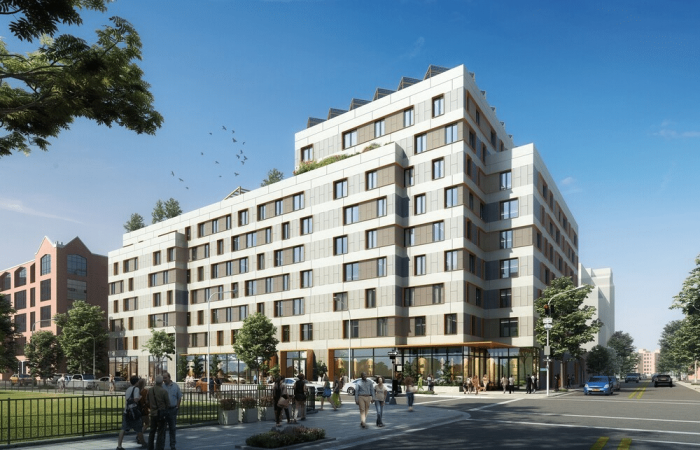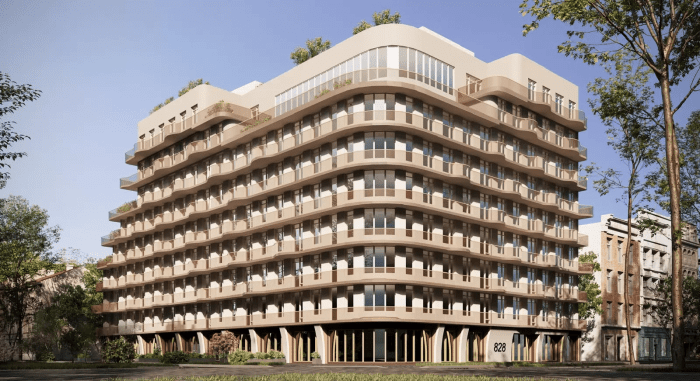Community groups and schools will be paying a lot to rent Bruce Ratner’s Nets arena — an apparent pullback from the developer’s promise to make the arena available to local non-profit groups “at a reasonable rate.”
“[T]he base rental rate for [non-sporting] events (e.g. graduations) … appears to be high,” according to an internal audit done for the state by the accounting firm KPMG and obtained by The Brooklyn Paper.
Ratner told the auditors that he’ll charge more than $100,000 to rent the designer dome — $62,000 in base rental, plus an estimated $41,000 in “event-related expenses,” according to the confidential audit.
That figure shocked the bean-counters.
KPMG, which was paid by Ratner to do the audit, warned him that his price was above the means of local groups and that it “may need to be further reduced to accommodate various civic groups.”
The newly revealed figures — which come on the heels of Ratner pocketing $400 million to name the arena The Barclays Center — are certain to come as a surprise to Atlantic Yards supporters, who have been promised access to the arena as a “community space” for graduations, church events and other local activities.
Local groups that signed a “Community Benefits Agreement” with Ratner are guaranteed the right to rent the arena for 10 events a year at a “reasonable rate.”
But it’s unclear how Ratner will define “reasonable rate,” based on the KPMG audit.
One of the developer’s staunchest allies, BUILD President James Caldwell, didn’t want to speculate, saying only, “I am paying attention to the jobs” that Atlantic Yards will create.
Ratner’s curvy, glass-walled Nets court will cost $637 million — making it the most expensive arena ever. But low-interest loans from the state, generous tax breaks and a $1 lease for the publicly financed arena mean that Ratner won’t have to cough up his own cash to build the Frank Gehry-designed Xanadu.
In fact, the state and city will pay the up-front costs of the arena. Ratner, in turn, will pay back construction costs only after the arena begins to lay its gold — or, more accurately, green — eggs.
Though common, economists condemn such financing deals because they turn out to be bigger gambles for the governments that provide initial funding then for the developer, who reaps the bigger prize.
“Arenas are risky for government because they have to induce new economic activity … to produce new tax revenues,” said George Sweeting, deputy director of fiscal watchdog group, the Independent Budget Office.
“But for the developer, it doesn’t matter whether he takes business from Madison Square Garden or Broadway as long as the bonds can be repaid. In the case of Ratner, I can’t say what his risk is.”
Neither can the developer. Ratner estimates his Prospect Heights arena will deliver approximately $400 million in pure profit, according to the KPMG audit.
The audit also revealed that:
• Ticket prices for Nets games will range from $10–$950, though it did not reveal how many $10 seats would be made available for every game.
• Ratner will charge more for a handful of courtside seats. The audit said his four-figure price is “on the high end” of the NBA scale.
• Ratner will charge high-rollers an eye-popping $4,500 fee for the right to buy a season ticket in the best 4,500 seats in the house. That one-time license fee would raise $20.2 million for the developer.
• The “Urban Room,” a glass-walled atrium adjacent to the arena that is counted as “public” space, will actually generate $700,000 a year for Ratner.
• Other naming and sponsorship deals will bring in another $11 million a year, with companies paying big bucks to slap their name on lounges and suites throughout the basketball palace.
Nets CEO Brett Yormark said this week that the “actual numbers might vary.” A spokesperson for Ratner would not answer repeated requests for comment.























